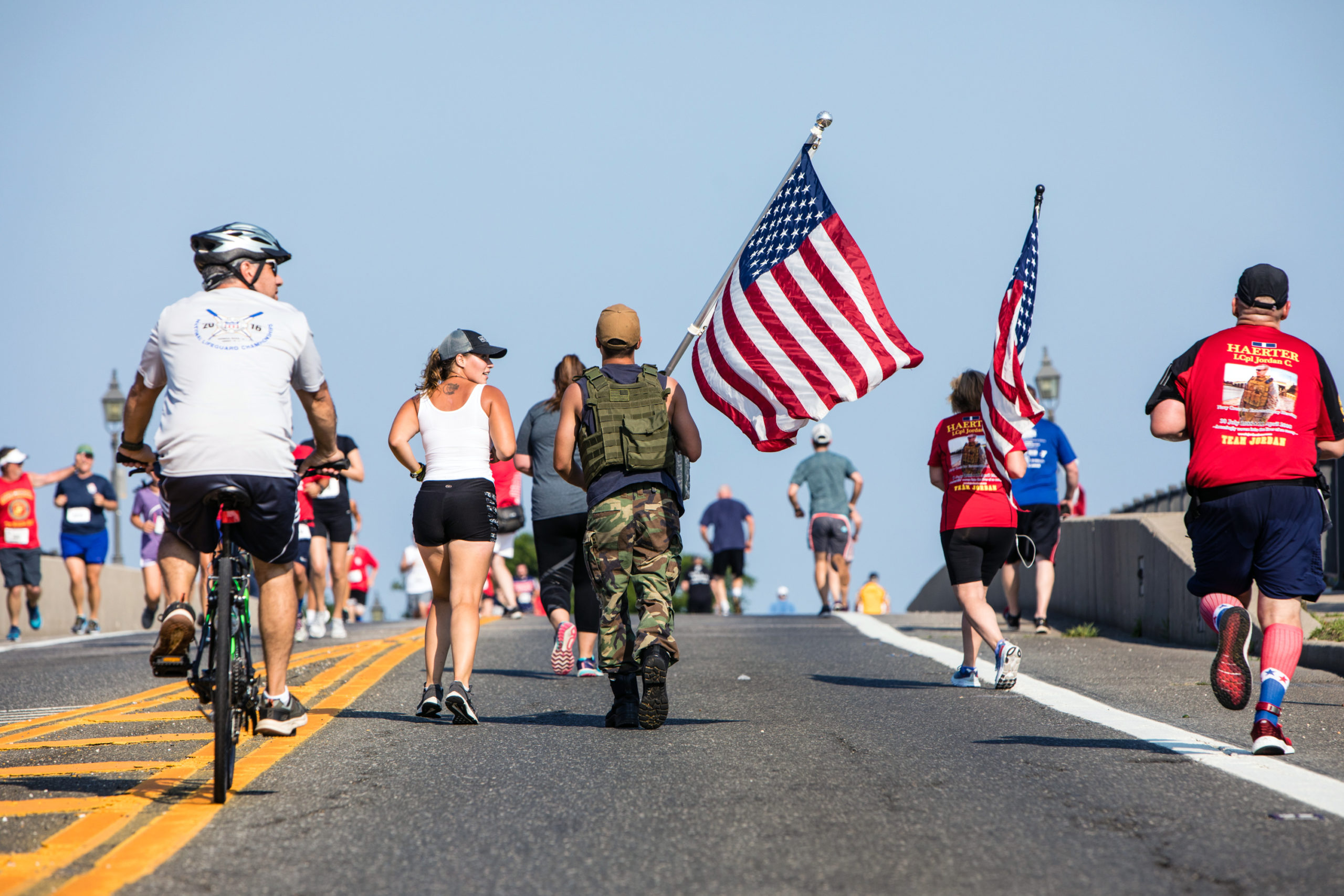
Though in-person competitive running has fallen victim to the COVID-19 pandemic, many of Long Island’s annual races are keeping the tradition alive through virtual races.
Jordan’s Run Veteran’s Memorial 5K Run/Walk had a virtual option prior to the pandemic, for veterans and those interested outside of Long Island. JoAnn Lyles, mother of Jordan Haeter, the race’s inspiration, and the race organizer, said they see satellite runs in California and South Carolina every year.
When the entire race is virtual, instead of completing the race at a specific time on a specific course, virtual runs give participants a longer window of time to run. Each person then submits proof, whether on a treadmill or through an app or other tracking system, of their time and distance.
Expanding the virtual option to the entire race presents a different set of challenges, according to race timer Brendan Dagan. Virtual races rely on social media and mailing lists to get the word out, which some participants may not be clued into. Twenty percent of registrants on average register for races day of, and without an in-person race, those runners may not know the race is happening.
Not every five kilometers is equal, Dagan said, and that means the race results are not as accurate as they would have been if everyone ran the same course, but he doesn’t feel the disparity will damage the integrity of the race.
“This is all in the spirit of competitiveness,” Dagan said. “It’s never going to be an apples to apples comparison because they’re not racing each other and they’re not on the same course. It’s separate like that, but it’s still fun, it feels engaging, it’s still a topic of conversation. The vast majority of people, well over 99 percent are going to stick to the integrity event and how it’s intended, because that’s what people tend to do.”
Some organizations hosted new virtual runs as fundraisers for local organizations. Peter Ciaccia and Jeff Klien organized the Need 2 Feed Virtual 5K Run-Jog-Walk-Hike to raise money for the Montauk Food Pantry. The run raised over $12,000 for the organization, which Dagan said comprised both the registration fees and additional donations from runners.
The organizers wanted to help the Montauk families severely impacted by the pandemic, and felt a virtual run fundraiser was the best way to keep everyone safe, while still bringing the community together with a fun, outdoor activity, according to their press release. The race had over 200 registrants, with 151 submitting times.
The run saw runners from 16 states and three international countries participating, according to the release, and the money raised helped the Montauk Food Pantry triple its distribution to over 300 families, according to Alice Houseknecht, the pantry’s director.
Virtual runs require significantly less money to operate, according to Dagan. The lack of administrative costs means almost all of the money raised from registration fees can go into the non-profit organizations the run is supporting, as opposed to the infrastructure of the race.
Jordan’s Run is cutting the extras involved with the race and ending sponsorships, and will donate proceeds to the Sag Harbor Food Pantry, according to a recent Facebook post.
The I Did The Grid Memorial 4 Mile Run/Walk in Northport, after canceling its in-person Memorial Day run, decided to open up its virtual run to all for free. They offered a printable bib and encouraged participants to find a creative course to help honor the fallen troops, and post their final times on Facebook or Instagram.
Virtual runs will likely be commonplace for the foreseeable future, but with lifting restrictions in New York, Lyles said in the post that she hopes small teams might be able to run together, to recreate some of the community feeling from in-person races.
Dagan said that one of the big draws of in-person racing is being able to meet up afterwards with fellow racers and the feeling of a big group working together for a goal, but that because of low costs, virtual racing has been a big fundraising success, and that while participation numbers are down, people are still eager to run and help out the causes.
“Virtual runs are never going to be as popular as your traditional run,” Dagan said. “But they are going all in. There’s examples of them on a massive level that are getting 20,000 registrations for it. People crave that in person feeling. But over the last nine weeks since March 15, the virtual run series which we support has raised over a quarter million dollars for Long Island charities.”